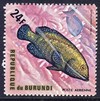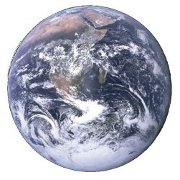
Custom Search
Animals in Qatar
The Gulf State of Qatar is home to a beautiful yet limited animal ark. Wild animals living in the country's arid desert terrain include exotic species such as dromedary camels, and the Oryx, a large antelope with long straight almost upright or swept back horns.
The decline in critical marine habitats in the coastal areas is part of the Qatar's preservation mission. The deep sea waters nearest to the country's coast are still inhabited by tropical species. Coral reefs, inter-tidal salt marshes, mangroves and sea-grass kelp beds grow across the coast. Macro-invertebrates living in the intertidal waters of Qatar are comprised of common marine species like the Mollusca.
Marine species living in the Arabian Gulf are growing scarce due to consumption and climate conditions. At present, there are approximately 150 species of fish recorded on record. The richest biome of aquatic life is in north east of Qatar on the Arabia Sea. Carangids, emperors, snappers and sweet lips are abundant with a smaller population of
snappers and sweet lips are abundant with a smaller population of  barracudas,
barracudas,  goatfish,
goatfish,  groupers,
groupers,  lizard fish, rabbit fish, shark and thread fins.
lizard fish, rabbit fish, shark and thread fins.
Due to the extremity of the climate, there is intense focus on animal husbandry. Camels constitute 21% of Qatar's livestock farming comparative to cattle ranching of 29% of similar activities. The country's domestic livestock holdings also include sheep herding of 3 to 1,500 heads, and goat herding of 5 to 650 heads at each farm. Domestic food production is the basis for intensification of livestock animals in Qatar. Aside from the market in fish, sheep and calf production is essential to Qatar's national consumption.
The decline in critical marine habitats in the coastal areas is part of the Qatar's preservation mission. The deep sea waters nearest to the country's coast are still inhabited by tropical species. Coral reefs, inter-tidal salt marshes, mangroves and sea-grass kelp beds grow across the coast. Macro-invertebrates living in the intertidal waters of Qatar are comprised of common marine species like the Mollusca.
Marine species living in the Arabian Gulf are growing scarce due to consumption and climate conditions. At present, there are approximately 150 species of fish recorded on record. The richest biome of aquatic life is in north east of Qatar on the Arabia Sea. Carangids, emperors,





Due to the extremity of the climate, there is intense focus on animal husbandry. Camels constitute 21% of Qatar's livestock farming comparative to cattle ranching of 29% of similar activities. The country's domestic livestock holdings also include sheep herding of 3 to 1,500 heads, and goat herding of 5 to 650 heads at each farm. Domestic food production is the basis for intensification of livestock animals in Qatar. Aside from the market in fish, sheep and calf production is essential to Qatar's national consumption.
Carnivores in Qatar
Asiatic jackal Sand catDolphins, porpoises, and whales in Qatar
Chinese white dolphin Grey dolphin Black finless porpoiseRodents in Qatar
Wagner's gerbilDugongs, manatees, and sea cows in Qatar
Dugong Information about the animals living in Qatar is brought to you by "List of countries of the world", your first stop in discovering all countries and animals of the world.
Information about the animals living in Qatar is brought to you by "List of countries of the world", your first stop in discovering all countries and animals of the world.The animals displayed on this page are grouped in their scientific order. View also countries of the world ordered by:
- List of TLD's
- Country dialling codes
- Population
- Kilometers of coastline
- Square kilometers of land
- Square kilometers of water
- Birth rate
- Death rate
- Irrigated land
- Countries starting with A
Privacy policy